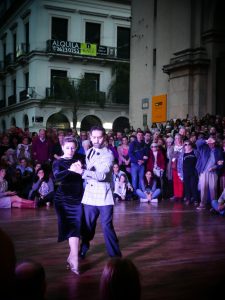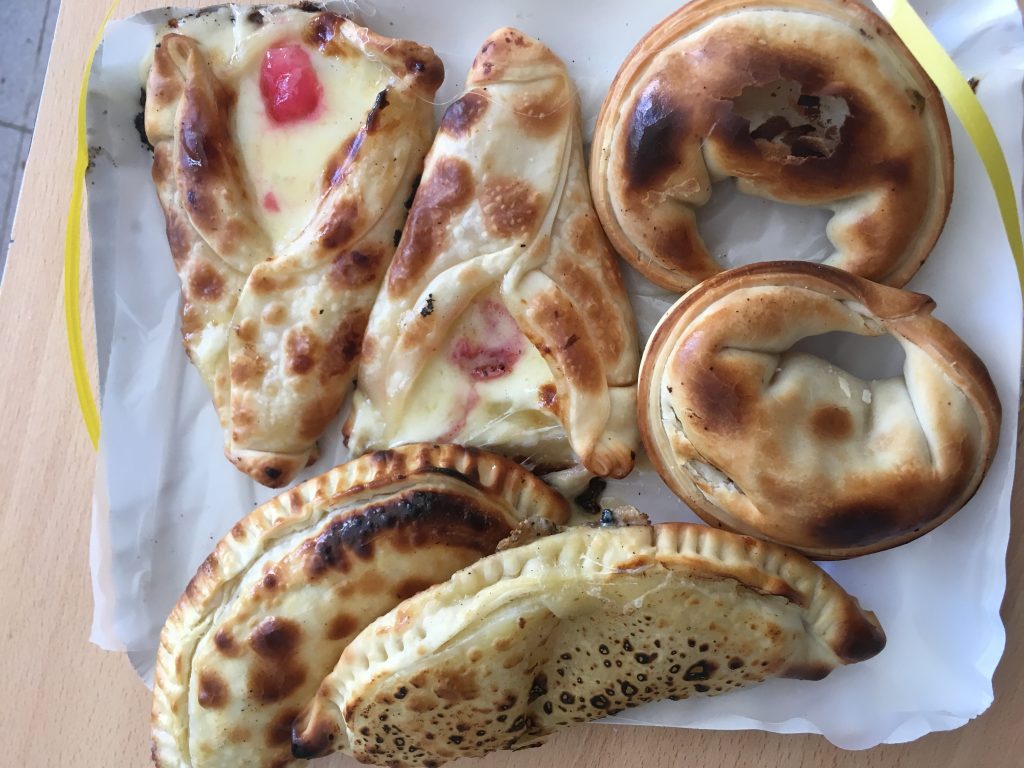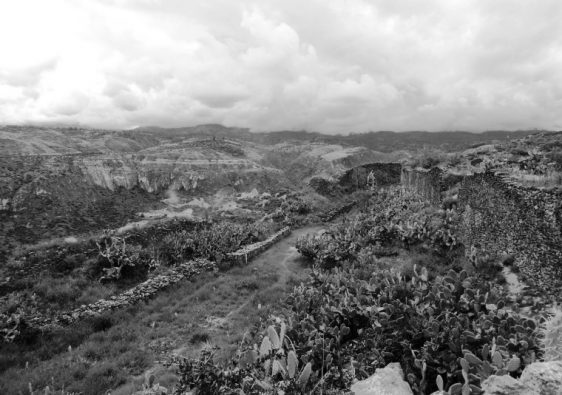Argentina is a very diverse South American country, a land of captivating traditions that reflect its rich cultural heritage. From the wild gauchos of the Pampas to the unimpressed Andean indios, or the fiery Lunfardo speakers of Buenos Aires, Argentina encompasses several cultures, each one with its own unique traditions and customs. Anthony and I travelled several months in Argentina and we fell in love with the many facets of the country. So let us share with you the most important –or outright weird– traditions we encountered during our trip.
This article about Argentina customs contains affiliate links. We’re not selling anything ourselves – we just help products and services we find great. If you click one of them and decide to purchase, it’ll be at no extra cost to you; and we’ll get a trifle that’ll help us bring you more awesome travel guides.
Cultural Diversity in Argentina
While travelling in Argentina, you’ll discover a remarkable tapestry of traditions, evident in the country’s ethnicity, architecture, and traditions. It’s been shaped by influences from indigenous peoples, Spanish colons, and modern European immigrants.
In the pampas, in the heart of the country, the gaucho culture prevails; in icy Patagonia, the customs bear a closer resemblance to those of their Chilean neighbours; while in the northern parts of Argentina, and sporadically along the Andes mountain range, indigenous peoples have left their marks.
Did you know that many South American countries have a European population?
Read our post about it.
The Gaucho Tradition
The gaucho, a skilled horseman and rancher, symbolizes the spirit of Argentina’s rural traditions and holds a special place in its folklore. He’s easy to recognise, with his wide-brimmed hat, poncho, and traditional boleadora (a throwing weapon).
His customs include drinking mate (see below), traditional horseback riding, folklore music, and a popular folk dance called malambo.
Check out the most interesting festivals of Argentina – including the Gauchos of Güemes Parade.

The North of Argentina
In the northern provinces, particularly around Salta, you will see everywhere a vibrant fusion of indigenous and colonial traditions. The region is famous for its lively folklore music and colourful festivals, that include captivating dances like the zamba. Here, ancient pre-Columbian customs blend harmoniously with Spanish colonial influences, creating a unique cultural tapestry.
Patagonia Argentina
The southern region of Patagonia offers a captivating blend of breathtaking natural beauty and cultural diversity. With its rugged and sparsely populated landscapes and close ties to Chilean neighbours, Patagonia is home to a distinct way of life.
Indigenous communities like the Mapuche are fighting to preserve their land and their traditions. Fortunately, visitors can discover their customs through traditional ceremonies, music, and handicrafts.

Rioplatense Spanish
It only takes some rudiments of Spanish to be intrigued by the peculiarities of “Argentinian”. What is also known as “Rioplatense Spanish” is used on both sides of the River Plate (hence the name), namely in Argentina and Uruguay.
When crowds of Italians migrated to Argentina at the end of the 19th century, they heavily influenced the local Spanish. With substantial influx from other migrants (e.g. Basques, Galicians), it created a unique blend of Spanish, with grammatical variations and a recognisable singsong.
Read our post about Argentine Spanish to learn a few words and expressions.
Dances in Argentina
Tango and Milonga
Tango, Argentina’s (and Uruguay’s) vibrant expression of passion and emotion, originated in the late 19th century in the poor neighbourhoods of the two capitals. It’s an integral part of Argentine culture and, since 2009, a UNESCO Intangible Cultural Heritage.
While visiting the major cities, you’ll find many ways to experience tango and milonga (which is very similar). Attend live tango performances in traditional venues or on the street; or take a beginners’ tango lesson in one of the many tango schools.
Learn all about the tango and milonga popular culture in Argentina.

Folklore Dancing
In the north of Argentina, particularly around the town of Salta, folklore dancing takes centre stage. Colourful costumes, lively music, and energetic dances like the chacarera and the gato showcase the rich cultural heritage of the region.
If you’re in the region, you’ll probably have the occasion to attend folk festivals; or witness local peñas, which are traditional gatherings featuring folklore music and dance performances.
We had the pleasure to experience a peña in Salta, with a folk dance group.
Read our experience and an introduction to the wonderful world of folklore around Salta.
Everyday passions
The Love of Football
Many Argentines are passionate about football, and the sport holds a special place in their hearts. The country has produced legendary players like Diego Maradona and Lionel Messi, who have become international icons.
The best way to experience the fervour surrounding football is to witness the electric atmosphere during a match of Argentina’s most renowned clubs, such as Boca Juniors or River Plate. Alternatively, take a tour of the football museums and stadiums – make sure to buy the ticket upfront, to avoid queues–; or the Maradona house museum and stadium.
Argentines’ Love of Traveling
this isn’t quite a tradition in the classical meaning, but maybe in a modern meaning. Argentines have a deep appreciation for nature, and they love to explore their own country, and South America in general.
You’re sure to meet many Argentinians in hostels, at sites, or juggling on the street to pay for their trip. They’re usually super friendly and love to share their traditions with other backpackers. So don’t be surprised if you are offered a chat and a mate in a hostel or a park.
From the breathtaking landscapes of Patagonia to the majestic Aconcagua mountain and the awe-inspiring Iguazu Falls, Argentina offers a plethora of natural wonders for adventurous travellers to discover. Check out our backpacking guide to Argentina, which includes where to go, what to see, and practical tips.

Heroes of the Independence
If you are the type of traveller who goes around reading street names, you’ll be surprised to find so many “General San Martín” streets, squares, avenues, parks, etc. – often more than once within the same city. That’s not a coincidence nor a mistake.
Argentina’s war of independence from Spanish rule is deeply ingrained in the collective memory of its people. To this day, this is the most important part of the national history. That’s why prominent liberation figures like José de San Martín, Manuel Belgrano or Martín Güemes adorn the cities.
Get a quick intro on the South American liberation heroes.
Argentine Traditions around Food and Drink
Drinking mate
Most Argentines drink yerba mate tea all day long and everywhere. You’ll see them holding their gourd and sipping on that metal straw in parks, in offices, at school, in cars, even while walking on the street (although the latter is more Uruguayan).
On the opposite to normal tea, mate is usually shared, as some kind of social ritual that brings people together. If you end up with 2 or more locals during your trip to Argentina, it’s likely you’ll be offered a mate. It’s our favourite Argentine tradition, so it’d be a shame to pass on the occasion!
Learn how to do it properly in our post about mate.

Asado
The traditional barbecue known as asado is a cornerstone of Argentine cuisine and a beloved community event. Argentinians gather around a parrilla (grill) to share succulent cuts of beef, sausages, and other meats. Although we don’t eat meat, we appreciate that a good barbecue fosters a sense of togetherness among friends and family.
You might well be invited by locals to an asado with their relatives and friends. If you’re a fellow vegetarian, don’t be afraid to bring your own veggies to put on the grill. Another way is to join a full asado experience, where you can learn from locals how to master the parrilla.
Wine Drinking Traditions
Argentina’s wine regions, such as Mendoza and Salta (mainly in Cafayate), are renowned for producing exceptional wines. Malbec, a full-bodied red wine, is the country’s flagship variety and Anna’s favourite (if that’s not a marketing argument!).
If you like wine, indulge in wine tastings, visit vineyards, and experience the rich wine culture of the country.
Empanadas and Argentine Pizza: Traditional Lunch or Snacks
When it comes to traditional snacks in Argentina, empanadas and Argentine pizza are not to be missed. Empanadas are delicious pastry turnovers filled with various savoury ingredients such as beef, chicken, cheese, or vegetables. They are either baked or fried and make for a convenient and satisfying on-the-go lunch. Grab them at empanada take-aways (with plenty of variations) or at most bakeries.
Argentine pizza (pronounce “pikssa” like a local) has its own distinct style. Although you’ll find the traditional toppings, it’s typically thick, deliciously greasy and extra cheesy! Whether you’re a meat lover or a vegetarian, you’ll find plenty of options to suit your taste buds.
Try this Argentine empanada recipe that’s super easy and fast to bake at home.

Dulce de Leche Pastries
Now for the dessert. Argentine bakeries offer a delightful array of very tasty pastries; more often than not with an unreasonable use of dulce de leche – a caramel-like sauce made from milk. Alfajores, a popular treat consisting of two cookies sandwiched around dulce de leche, exemplify the nation’s sweet tooth.
We were absolutely blown away by the many yummy pastries we found in Argentina, and dulce de leche quickly became our favourite. Read our bakery guide to Argentina.

Traveling to Argentina?
It’s great to get a gist of the traditions in Argentina, before or during your trip there. We collected even more facts about the country to help you plan your trip. To understand more about its culture, landscapes, and society, read our all the facts about Argentina.




My spouse and I absolutely love your blog and find many of your posts to be exactly what I’m looking for. Do you offer guest writers to write content for yourself?
I wouldn’t mind composing a post or elaborating on many of the subjects you write about here. Again, awesome blog!
Hello Ramona, and thank you for your interest. Please get in touch with us using the contact form so we can work out something together.
I and my pals came reading through the nice secrets and techniques found on your website and then immediately I got a terrible feeling I had not thanked the web site owner for those secrets. My men appeared to be warmed to see them and have in effect pretty much been enjoying them. Many thanks for being well kind and then for utilizing these kinds of useful useful guides most people are really wanting to know about. Our honest regret for not expressing appreciation to you earlier.
Best spammy comment ever! 😀 Thank you for the laugh, here’s your medal: 🥇